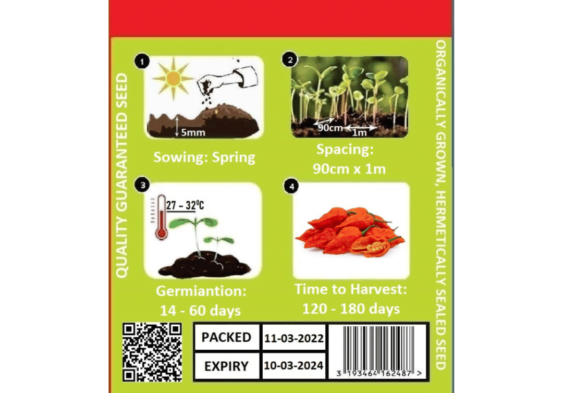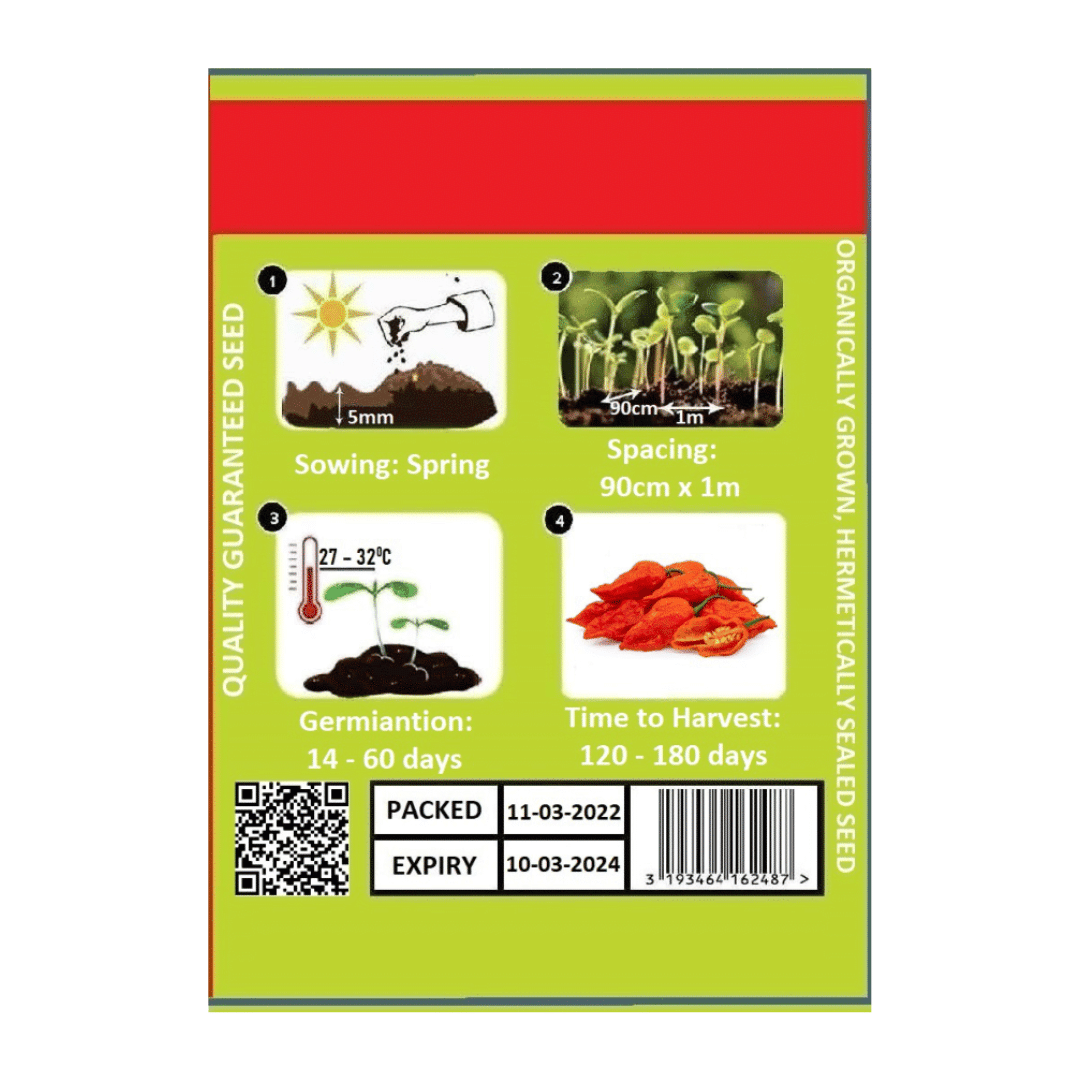HomeIndian Ghost Pepper Red Seeds


30 in stock
R35.00
The Ghost Pepper aka Bhut Jolokia chilli was at one point the hottest pepper in the world! It took the crown in 2007, and held the record for 4 years! Fun fact: This is the hottest commercially grown pepper in the world! Most ghost peppers run around the 900,000 SHU (Scoville Heat Unit) mark, but […]
The Ghost Pepper aka Bhut Jolokia chilli was at one point the hottest pepper in the world! It took the crown in 2007, and held the record for 4 years! Fun fact: This is the hottest commercially grown pepper in the world! Most ghost peppers run around the 900,000 SHU (Scoville Heat Unit) mark, but they have been recorded at over 1,000,000 SHU’s!
So if one were interested in growing ghost peppers for either the novelty of doing so or because one would actually want to ingest these flaming fruits, the question is, “How to grow ghost peppers?”. Growing ghost peppers is difficult compared to other hot peppers due to their requirements for a certain amount of humidity and heat, which is in direct relation to their heat index.
In order to best grow these peppers, your climate should most closely match that of their native India, which has five months of intensely high humidity and temperatures. If your growing season is short, the ghost pepper plants can be moved indoors in the evening; however, these plants are sensitive to shifts in their environments and a lot of moving around may damage the plants irreparably.
The surest way of growing ghost peppers is indoors or in a greenhouse where temperatures can be maintained at 24C. Seeds for ghost peppers take around 35 days to germinate in very warm soil between 27-32 C, and the soil must be kept moist consistently. Soak the seeds in hydrogen peroxide for a minute to increase germination success, and use full sun fluorescent light bulbs to maintain temperature and humidity.

Every seed variety undergoes organic cultivation and self-testing on our South African, Botswanan, Zambian, and Tanzanian farms. Our commitment lies in offering a diverse selection of organically grown, open-pollinated, Non-GMO seeds, proudly produced and acclimated locally. Before planting, please verify the conditions in your area suitable for the specific seed type. Growth rates and germination times hinge on various factors like soil conditions, rainfall/watering patterns, climate, and more. The outcome of growth and harvest may be influenced by these conditions.